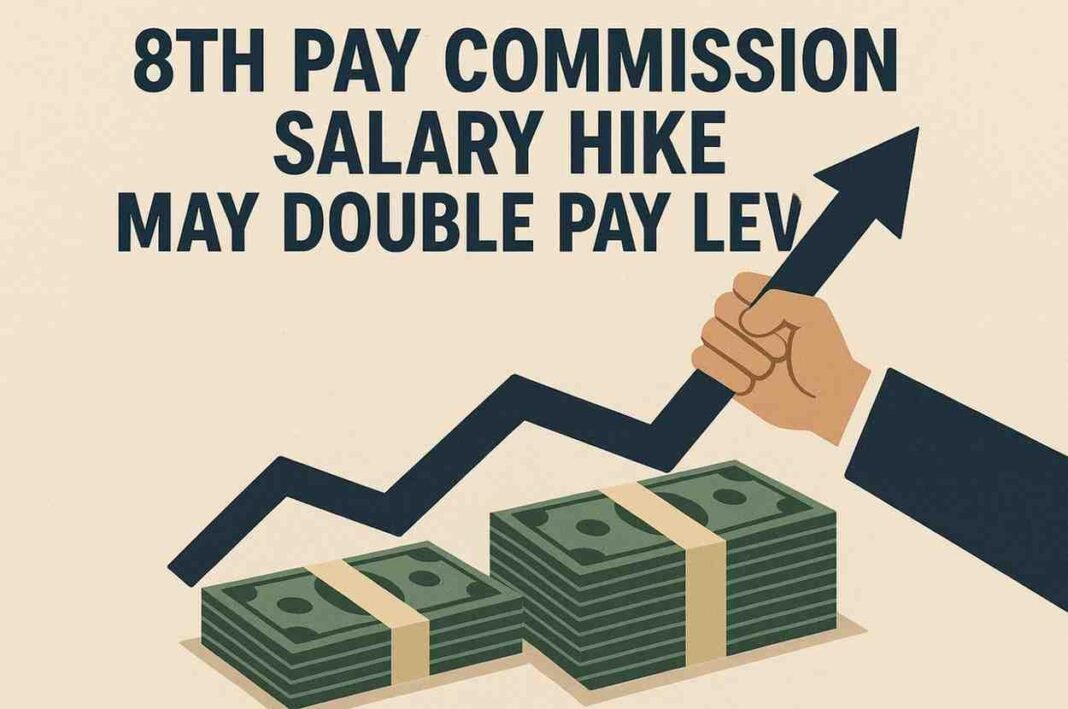8th Pay Commission Update: What to Expect
Central government employees across India are keenly awaiting clarity on the 8th Pay Commission, which is expected to redefine salaries, pensions, and allowances. While the government has yet to formally announce the panel, discussions within policy circles suggest that the new pay structure will likely retain the existing Pay Matrix introduced in the 7th Pay Commission. The major change is expected to come from a new fitment factor, which could nearly double existing pay scales.
Pay Matrix Likely to Stay
The Pay Matrix system, brought in during the 7th Pay Commission, simplified earlier complexities of pay bands and grade pay. Designed on the basis of the Dr. Wallace Aykroyd formula, the Pay Matrix ensures that the minimum salary is tied to the cost of living and essential needs. In the 8th Pay Commission, this structure is unlikely to be overhauled. Instead, a new fitment factor multiplier will be applied across the matrix levels, substantially raising salaries without altering the fundamental framework.
Expected Fitment Factor and Salary Formula
According to early estimates, the proposed fitment factor for the 8th Pay Commission is 1.92. This factor directly multiplies the current basic pay to arrive at the revised basic. For instance, the current minimum basic pay of ₹18,000 per month would increase to:
₹18,000 × 1.92 = ₹34,560 per month.
This alone accounts for a rise of over ₹16,500 in the basic salary. Once Dearness Allowance (DA), House Rent Allowance (HRA), and other benefits are included, the net increase will be far more significant.
Example: How ₹60,000 Basic Pay Will Rise
The best way to understand the impact is to look at an example. A Group B gazetted officer currently drawing a basic salary of ₹60,000 could see the following changes:
-
Current Basic Pay: ₹60,000
-
New Basic (with 1.92 factor): ₹1,15,200
-
DA (55%): ₹63,360
-
HRA (27% in metro city): ₹31,104
This brings the total salary to ₹2,09,664, meaning someone earning just above ₹1 lakh currently could cross the ₹2 lakh threshold after revisions.
Timeline of Implementation
Despite strong expectations, the government has not yet set the Terms of Reference (ToR) or appointed members for the 8th Pay Commission. Traditionally, once formed, a Pay Commission takes about two to three years to prepare and roll out recommendations.
Initially, the commission was expected to be implemented from January 1, 2026, with notifications likely by the end of 2025. However, the delay in announcements has raised concerns among employees and unions. If the panel is set up late, the rollout could stretch to 2028, although the revisions would still apply retrospectively from January 1, 2026.
Arrears and Pension Benefits
Even if implementation is delayed, employees and pensioners can expect arrears for the period between the effective date and the actual rollout. This ensures that no one loses out financially, though the wait for actual revised salaries and pensions could be frustrating. Pensioners, in particular, are eagerly awaiting relief, as the new pay scales will directly impact post-retirement benefits.
Employee Anxiety Rising
Unions representing central government employees have already begun pressing the government to expedite the process. Their concern is that prolonged uncertainty impacts financial planning for millions of employees and retirees. While the revised salaries are attractive, the anxiety stems from the slow pace of official action.
Bottom Line
The 8th Pay Commission promises a historic salary jump, with minimum pay levels expected to rise significantly and mid-to-senior officials potentially seeing salaries double. Yet, the absence of a formal notification means the wait could extend longer than anticipated. Employees may eventually enjoy arrears, but until the government acts, the timeline remains uncertain.








